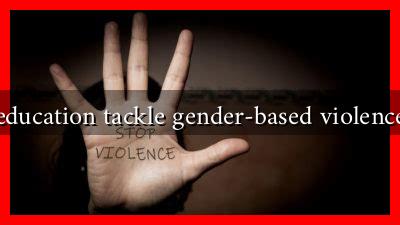-
Table of Contents
How Can Education Tackle Gender-Based Violence for Girls?
Gender-based violence (GBV) remains a pervasive issue affecting millions of girls worldwide. It manifests in various forms, including physical, sexual, and emotional abuse, often rooted in deep-seated gender inequalities. Education plays a crucial role in addressing and mitigating these issues, empowering girls and fostering a culture of respect and equality. This article explores how education can effectively tackle gender-based violence against girls, highlighting strategies, examples, and the importance of community involvement.
The Role of Education in Empowering Girls
Education is a powerful tool for empowerment. It equips girls with knowledge, skills, and confidence, enabling them to challenge societal norms that perpetuate violence. Here are some ways education can empower girls:
- Knowledge of Rights: Education helps girls understand their rights and the laws protecting them from violence. This awareness is crucial for them to seek help and advocate for themselves.
- Critical Thinking Skills: Educational programs that promote critical thinking enable girls to question harmful stereotypes and societal norms that condone violence.
- Leadership Opportunities: Schools can provide leadership training, encouraging girls to take active roles in their communities and advocate for change.
Curriculum Development: Addressing Gender-Based Violence
Integrating gender studies and discussions about GBV into school curricula is essential. This can be achieved through:
- Comprehensive Sex Education: Programs that include discussions on consent, healthy relationships, and respect can help prevent GBV. For instance, the United Nations Population Fund emphasizes the importance of comprehensive sexuality education in reducing violence.
- Gender Sensitization Workshops: Schools can organize workshops for both boys and girls to foster understanding and respect for gender equality.
- Inclusion of Female Role Models: Incorporating stories of strong female figures in history and contemporary society can inspire girls and challenge gender stereotypes.
Safe Learning Environments
Creating a safe and supportive learning environment is vital for girls to thrive. Schools should implement policies that protect girls from harassment and violence, including:
- Anti-Bullying Policies: Establishing clear policies against bullying and harassment can create a safer atmosphere for girls.
- Reporting Mechanisms: Schools should provide confidential reporting systems for girls to report incidents of violence without fear of retaliation.
- Support Services: Access to counseling and support services can help girls cope with trauma and build resilience.
Community Involvement and Awareness Campaigns
Education should extend beyond the classroom. Engaging the community is crucial in addressing GBV. Strategies include:
- Parent and Community Workshops: Educating parents and community members about the importance of gender equality can foster a supportive environment for girls.
- Partnerships with NGOs: Collaborating with organizations that specialize in GBV prevention can enhance educational programs and provide additional resources.
- Awareness Campaigns: Schools can organize campaigns to raise awareness about GBV, encouraging community dialogue and action.
Case Studies: Successful Educational Interventions
Several initiatives worldwide have successfully tackled gender-based violence through education:
- The Girl Effect: This initiative focuses on empowering girls through education, leading to reduced rates of child marriage and violence.
- Educate Girls: Operating in India, this program aims to increase girls’ enrollment in schools while addressing issues of safety and gender equality.
- UNESCO’s Global Education Monitoring Report: This report highlights the importance of education in combating GBV and provides guidelines for policymakers.
Conclusion
Education is a fundamental pillar in the fight against gender-based violence for girls. By empowering them with knowledge, creating safe learning environments, and involving the community, we can significantly reduce the prevalence of GBV. It is essential for governments, educational institutions, and communities to work together to implement effective strategies that promote gender equality and protect the rights of girls. As we continue to advocate for educational reforms, we must remember that every girl deserves the right to learn in a safe and supportive environment, free from violence and discrimination.




